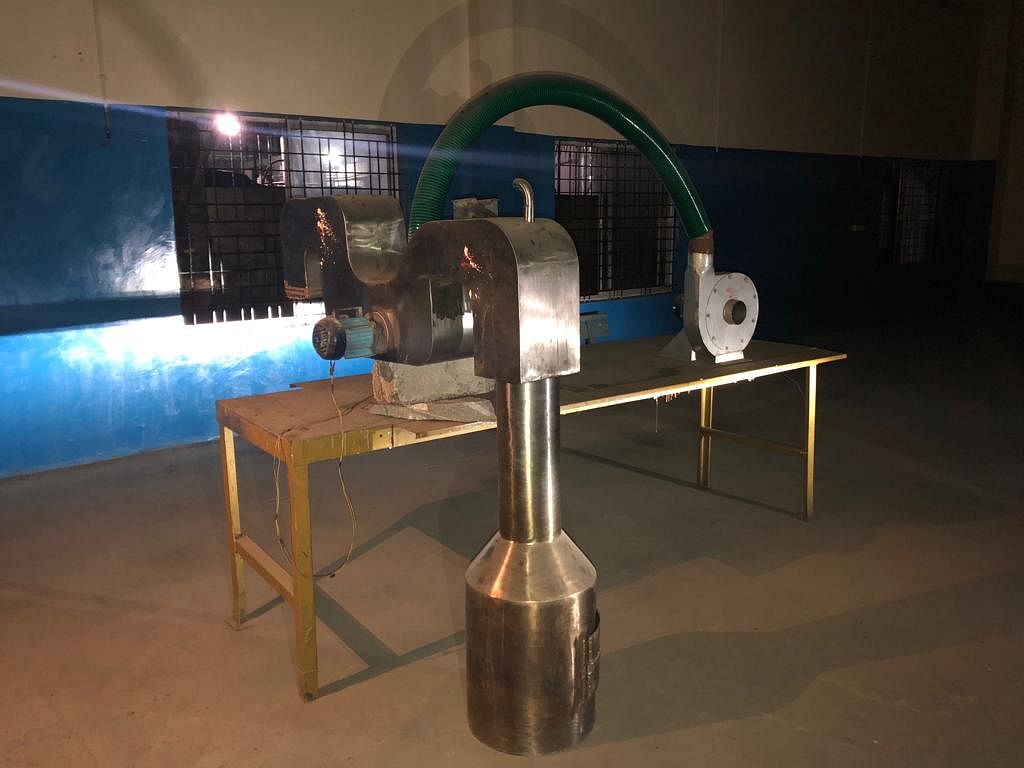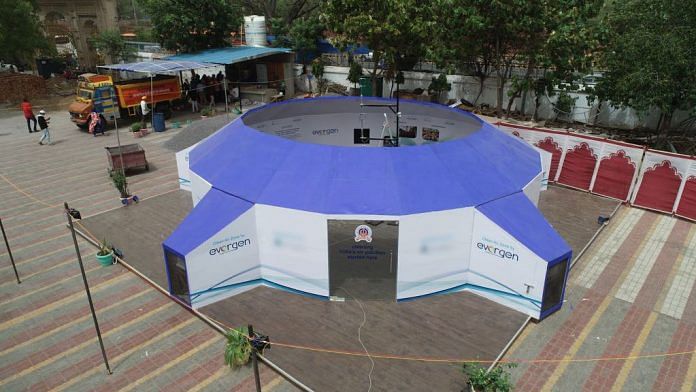Air purifiers suck particulate matter and carbon dioxide to leave behind cleaner air. Are they the answer to Delhi’s pollution?
New Delhi: The difference in readings was indeed stark. As the world choked on pollution over 10 times the safe levels, the air inside the open-air enclosure was fresh, almost Himalayan, the concentration of toxins well below the danger threshold.
The location was Delhi, and the event a showcase of a new air purifier being pitched by manufacturers as a solution to the Capital’s pollution problem.
Outside, the levels of two of the most notorious pollutants, PM 2.5 and PM 10, were recorded at 456 and 524 micrograms per cubic metre, respectively — alarming figures, given that the Central Pollution Control Board (CPCB) specifies the safe levels of PM 2.5 and PM 10 at below 30 and below 50, respectively.
Meanwhile, inside the open-air enclosure where the Evergen Systems purifier was being exhibited, PM 2.5 and PM 10 levels in the vicinity of the equipment fell to 18 and 21, respectively, within a minute.
Also read: Exercise, food & plants: Best ways to prepare your body and home to fight India’s toxic air
Choking in the city
Air purifiers are a subject of fresh interest among Delhiites as they find themselves confronted by dystopian pollution levels that are believed to be among the worst in the world.
The pollution levels, measured on the air quality index (AQI), have hovered between “very poor” and “severe” over the past few days, with the following week expected to see a fresh spurt in light of Diwali.
Both “very poor” and “severe” signify a health hazard even for healthy people, especially if there’s been prolonged exposure.
Several factors are believed to stoke the crisis, including stubble burning by farmers in Punjab and Haryana, construction activities, and Delhi’s large vehicular population.
While the authorities have been trying to crack down on stubble burning, with questionable success, a 10-day construction ban was imposed in Delhi from Thursday in a bid to curb pollution.
Other steps have included shutting down the polluting Badarpur power plant, while the Delhi government is also said to be mulling another round of the ‘odd-even’ car rationing scheme.
In September, Union Environment Minister Harsh Vardhan also inaugurated air purifiers at select intersections in Delhi as part of another bid to attack pollution. The device, called WAYU, has been developed by the Council of Scientific and Industrial Research-National Environmental Engineering Research Institute (CSIR-NEERI).
WAYU can reportedly remove 80-90 per cent of particulate matter and 40-50 per cent of poisonous gases in an area measuring 500 square metres, that is, roughly two tennis courts.
The aforementioned Evergen purifier, along with another new innovation by a young Indian, is the latest entrant in an increasingly lucrative market for clean air.
The manufacturers of both technologies say they are capable of industrial-grade outdoor air clean-up at street level, spelling hope of easy breaths for choked cities.
The innovation by Indo-UK company Evergen Systems has been certified by the National Physical Laboratory of India, the apex body for maintaining the country’s standards for weights and measures.
At a recent product demonstration, several Evergen Systems air filters were installed on the walls of a makeshift open-air enclosure that can accommodate around 50 people at a time.
“The efficiency of this air purifier was up to 90 per cent. This is the first time we checked this kind of technology… 90 per cent is good enough,” said Dr Shankar Agarwal, chief scientist at National Physical Laboratory of India, after the demo.
“No city has been able to fix the problem of air pollution,” said Sukhbir Sidhu, founder and CEO of Evergen Systems. “It’s a huge problem and we must do something about it.”
The device uses airflow engineering and a purifier equipped with nano-particles to suck the bulk of the dust out of the air, with an inbuilt chemical medium tackling polluting gases such as nitrogen oxide and carbon dioxide.
Before 2018 ends, Evergen Systems founder Sidhu said they expected to install the purifier in areas like bus shelters in Delhi and Gurgaon.
“We have been speaking with state governments and municipalities for a year now, and were waiting for certification from the National Physical Laboratory of India [to move ahead],” he added.
Tackling the pollution caused by gases is also the USP of another new device, invented by 24-year-old Surya Prakash.

This gizmo uses algae to not only clean air but also generate new oxygen.
Prakash’s air purifier idea was innovative enough to have caught the interest of Excel Tech, a Bengaluru company manufacturing industrial-grade air filters.
“When he [Prakash] told me about the device, I thought it was a good idea,” said Ravi Kumar, founder of the company. “So I offered him a job with us to build his device.”
According to Prakash, the algae in his device absorb carbon dioxide and toxic gases containing sulphur and nitrogen to produce oxygen, which is then released into the air.
At a recent trial in a 13-square-metre room with eight people, it helped bring down the level of carbon dioxide, a major pollutant, from 1,300 parts per million (ppm) to 600-800 ppm in an hour. The level of CO2 in fresh air is around 400 ppm.
“For other air purifying devices in the market, the carbon dioxide levels exceed 1,000 ppm, which is associated with drowsiness and poor air,” said Kumar.
In trials, the device reportedly generated 62.5 grams of oxygen per kilogram of carbon dioxide absorbed.
‘Betting my life on it’
The device is ready for commercialisation and Prakash is hopeful that government agencies will find his invention helpful in beating air pollution.
“I am willing to bet my life on it — this device works,” he told The Print. “If 2,000 of these devices can be installed in Delhi, Mumbai, Hyderabad, then India’s air pollution can be reduced to a great extent.”
However, money may be a barrier for the wider implementation of air purifiers. While Evergen System’s air purifier would cost over Rs 2.2 lakh for bus shelters; Prakash’s device costs around Rs 8 lakh.
Also read: How to choose the right pollution mask that will help you survive Delhi’s toxic air
Meanwhile, experts, even the manufacturers themselves, remain sceptical about the actual impact of air purifiers outside closed spaces.
“It’s impossible to clean all the polluted air,” said G.B.S. Sodhi, director and India head of Evergen Systems. “But here we are taking a first step towards cleaning the air.”
R. Suresh of The Energy and Resources Institute (TERI) added, “We are not going to say that all outdoor air purifiers are useless, but purifying outdoor air is much more difficult than purifying indoor air.”
“If a sufficient number of air purifiers can be functional for an extended time period, perhaps it could be effective in stabilising air quality,” he said, “But this is a long-, long-term goal.”
ThePrint reached CPCB officials to learn whether WAYU had performed as expected, but it was yet to receive a response at the time of publishing. This report will be updated when they respond.






